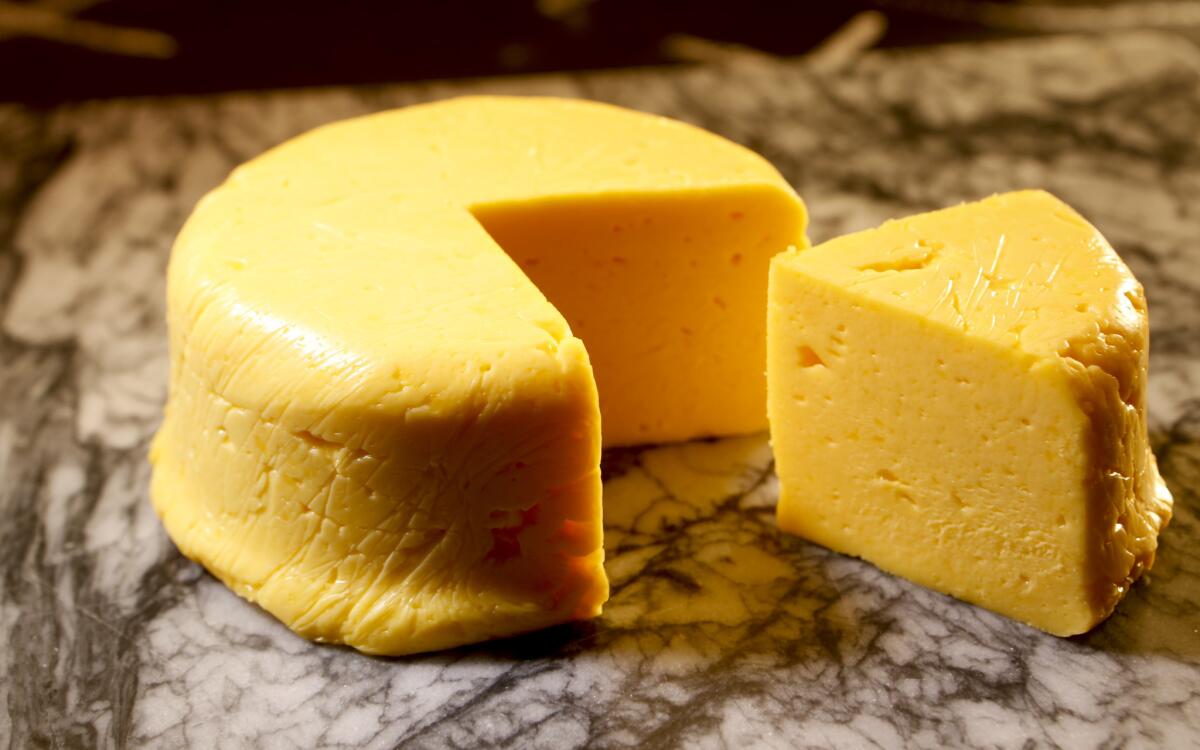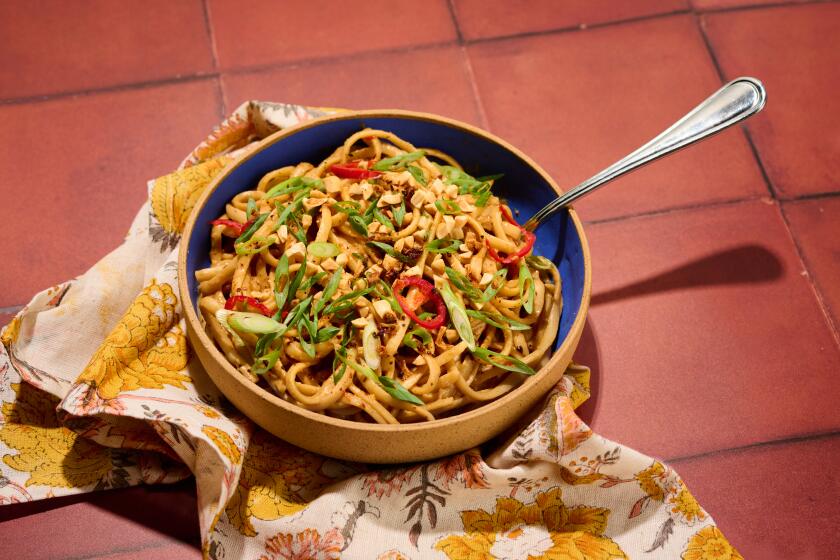Homemade processed cheese

You could say it started with the āCheesepocalypseā ā you know, all those stories about a Velveeta shortage that have had everyone in a tizzy. And with the Super Bowl on Sunday!
But thereās no need to worry. You can make it yourself ā a homemade āfood prepperā version of liquid gold. Just in case.
Before you laugh, hear me out. Processed cheese, like those individually wrapped singles, often gets a bad rap, but just try getting that perfect ooze and silky texture from any other cheese when you melt it. Real cheese tends to separate when heated, the proteins clumping together while fats and moisture ooze out in the most unattractive way.
Processed cheese can take the heat and keep it together, with a glossy sheen to boot.
Even the molecular gastronomers are fans. Nathan Myhrvoldās āModernist Cuisine at Homeā contains a number of processed cheese variations, and Heston Blumenthal has a rather intense recipe to go with his reinvented hamburger.
I wanted an easy method I could make at home, using ingredients I could find at the supermarket.
I tried Myhrvoldās and Blumenthalās methods, along with a number of others, and then went off and experimented some more. It took a little while ā actually, more than 20 trials and at least 10 pounds of cheese ā before I found something I liked.
Letās start with the cheese. Processed cheese has traditionally consisted of a blend of cheeses, typically Colby and cheddar. For a home version, a mild cheddar is perfect for flavor (itās not overly intense).
In order to get the right āoozeā when the cheese is melted, you need to add a liquid. I tried recipes that called for beer, milk, water and even infused sherry. I went with a blend of water and dry white wine. The wine not only gives the cheese a nice tang, it also helps to hold the cheese together as it melts, as when making a classic fondue.
But wine alone is not enough. Myhrvold and Blumenthal both use sodium citrate (derived from citrus, itās also used in a number of commercial processed cheeses) as an emulsifier. Sodium citrate isnāt that hard to find online, but you wonāt find it at the local market.
To help hold the liquid and cheese together, I added dehydrated milk and tapioca starch. I tested a number of thickeners, including the gelatin preferred by Americaās Test Kitchen, but I liked the texture of tapioca, and, unlike gelatin, tapioca keeps the cheese vegetarian.
Finally, I added a little butter for richness and moisture, and a touch of salt to bump up the flavors.
To make the cheese, finely grate the cheddar and pulse it in a food processor along with the milk powder, tapioca starch and salt, and bring the water, wine and butter to a boil in a small saucepan. With the motor running, slowly drizzle the liquids onto the cheese to melt and combine. Finally, spoon the cheese into a plastic wrap-lined ramekin (you could use a square mold for a more supermarket look, but I love the idea of a wheel of cheese), and then chill it in the refrigerator for a few hours to firm up.
The results? Amazing cheese that melts just right, using only a handful of ingredients.
After mild cheddar, I tried āprocessingā other cheeses with varying degrees of success. I found smoked fresh Gouda makes a great processed cheese, as does the sharp cheddar from Tillamook. But when I tried sharp cheddar from another producer, it simply didnāt work. Different cheeses vary in consistency, and the recipe will need to be tweaked.
Still, that processed Gouda made an excellent mac ānā cheese. Most recipes call for melting the cheese in a roux-based sauce; while that helps keep the cheese from separating as it cooks, the flour also clouds the pure cheese flavor. Because I didnāt need to add the roux, the cheese flavor was richer, more pronounced.
Cheesepocalypse averted, Iāll be using the processed mild cheddar in my queso dip for the game on Sunday. I canāt say Iāll never buy processed cheese again, but thereās nothing like being able to make and flavor it myself.
Best of all? I know exactly what went into it.
Line a 12-ounce ramekin or similar-sized small loaf pan or mold with plastic wrap.
Very finely grate the cheese and place it in a food processor. Add the milk powder, tapioca flour and salt, and pulse to thoroughly combine.
In a small saucepan, combine the butter, wine and water. Cover and quickly bring to a boil over high heat, 1 to 2 minutes.
Immediately remove from heat and, with the processor running, slowly pour the hot liquid in with the cheese. Continue processing until the cheese is fully melted and all of the ingredients are incorporated, scraping the bowl once or twice in between processing.
Spoon the cheese into the prepared loaf pan. Smooth the top and cover with plastic wrap.
Refrigerate the cheese until fully set and firm enough to slice, preferably several hours and up to overnight. The cheese will keep for up to 1 month, covered and refrigerated.
Get our Cooking newsletter.
Your roundup of inspiring recipes and kitchen tricks.
You may occasionally receive promotional content from the Los Angeles Times.
















